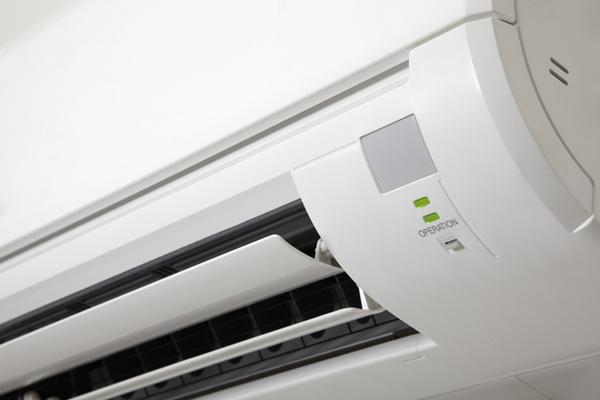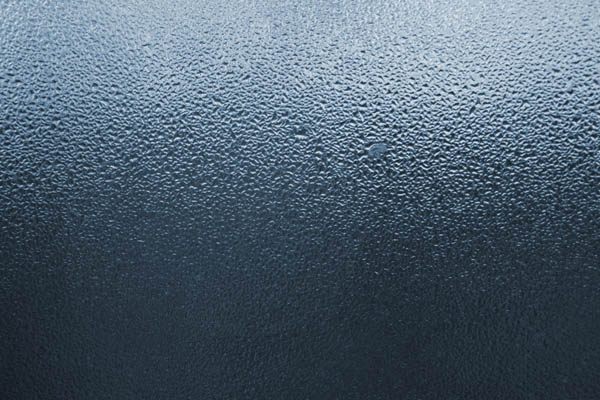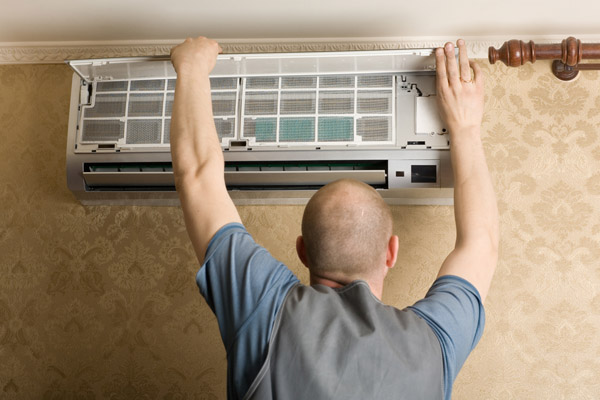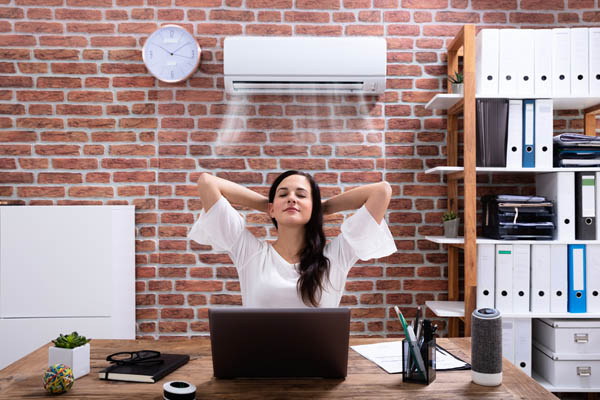
To put it in simple terms, condensation is when vapor is converted to liquid. The air condenses into water droplets on a cold surface when hot air comes in contact with it. An example of this is when you go out with a cold can of soda on a hot day. The droplets you see on the can are formed as the humid air is cooled beyond its dew point.
A mini-split system is one of the top cooling solutions on the market. It can capture humidity from inside your home and properly let it go outside. As a result, you have drier indoor air for an extra cooling effect. Your skin’s moisture also evaporates, which, in turn, cools your body down, and the cooling sensation is felt. In this article, we discuss what you need to know about the ductless condensate pump.
Is Condensate Harmful?
Table of Contents
- 1 Is Condensate Harmful?
- 2 How Do Mini-Splits Remove Condensate?
- 3 What Are The Basic Components Of A Pump?
- 4 Types Of Condensate Pumps
- 5 Four Common Ductless Condensate Pump Installation Mistakes
- 6 Do I Need Professional Installation?
- 7 Call Skylands Energy Service To Learn More About Ductless HVAC Systems

If condensation is not correctly eliminated from the air inside your home, it can create multiple problems. These water droplets will pool as time passes, causing damage to your ceiling, floors, walls, and other possessions. It can also cause mold to grow around your home. This will affect not only your home and your health as well. Molds can trigger skin allergies or respiratory illnesses like asthma.
Without proper drainage, condensate will not only cause damage to your property but also affect your family’s overall health. It greatly impacts your indoor air quality. Repairing these damages can cost you a few thousand dollars. Therefore, the condensation must properly drain away from your home.
How Do Mini-Splits Remove Condensate?

A mini-split system has different ways to get rid of condensate. Depending on the make and model, some units employ a gravity-drain tube while some need pumps. Here are a few of the common ways mini-splits remove condensate:
Pipe Runs
Floor and wall-mounted units usually do not feature condensate pumps. Instead, they depend on gravity-draining to eliminate the water. The drain line must, therefore, be sloped downward.
You should ensure that the drain line runs through a hole and that it is at least one-fourth to one-half inches higher inside than it is outside. This way, the line is angled down so that it can remove the accumulated moisture correctly.
Drain Tubes
Almost all types of floor-mounted and wall-mounted units use drain tubes to get rid of condensation. It is the most common way and it makes use of a 5/8″ inner diameter vinyl tubing.
One of the things to ensure when you are using this flexible vinyl drain tube is that it does not get kinked. Otherwise, water will not be properly drained. The condensate might even overflow and damage the indoor air handler. Use a braided tubing instead of the basic clear tube as it has lesser chances of becoming kinked.
Pumps
There are some cases where gravity-reliant drainage is not feasible. This is when a condensate pump comes in. It is made up of a 1” or 1 to 1/4″ PVC instead of the usual tubing. This allows the pump to maintain enough slope over a long horizontal run.
It is possible to connect several indoor air handlers to a single drain line. Ensure that you check the manufacturer’s guidelines during such applications. Moreover, refer to a professional technician’s recommendations to make sure that the line can manage the amount of water that all connected indoor units will create.
Concealed ducted, ceiling suspended, and ceiling cassette units usually feature built-in lift pumps. Whereas, floor and wall-mounted models are meant to be mounted high up a wall that they can drain the condensate without the help of a pump. However, if the unit is installed on the ground level, then you need a condensate pump to remove the water to a more suitable location.
What Are The Basic Components Of A Pump?
Condensate pumps are generally comprised of two essential parts, namely, the reservoir and the float switch. The reservoir is linked to the indoor unit’s drain pan. It is where the collected water goes during your mini-split unit’s cooling operation.
It is only when the condensate reaches a specific level that the built-in float switch turns on the condensate pump. The float switch functions as a warning bell as well. When the condensate pump does not operate properly, the float switch turns off the indoor air handler to keep the condensate from overflowing.
Types Of Condensate Pumps
All condensate pumps are made for the same function, which is to eliminate condensate. However, there are several types you can choose from. It is recommended to know the options you have and the benefits each has. This information, along with your preferences, will help you determine the type of condensate pump that will best serve your needs.
The various types of condensate pumps include the following:
Standard
This style of condensate pump is discreet and compact. The reservoir is installed inside the indoor air handler. This way, you are sure that it is hidden out of sight behind a wall or a ceiling. It also operates quietly. It works well with most applications as standard condensate pumps are typically the plug and play type.
Low Profile
If you are searching for a condensate pump that is less intrusive, then go for a low profile one. It is meant to be fitted inside the condensate pump so that it is entirely away from view. This type of unit is also one of the slimmest of its kind, as it is designed to be the most inconspicuous pump in the market.
High Suction
A high suction condensate pump is installed much like a standard one. The difference is that a high suction pump comes with extra suction power. Therefore, it can lift condensate higher and further. It is ideal for when the indoor unit is installed below ground level. When this is the case, the water needs to be pumped to a higher level before draining it outside. It is also perfect for when you are looking to minimize noise as a high suction condensate pump can be installed further away from your living space.
Surface Mounted
A surface mounted condensate pump is installed directly below your mini-split system. The reservoir and pump are placed in a compact box outside of the unit. Due to its location, a surface mounted pump is easy to access when you need to clean or repair any part of it. A surface mounted condensate pump is, therefore, an excellent choice for applications where easy access to the reservoir is crucial.
Four Common Ductless Condensate Pump Installation Mistakes

Installing mini-split condensate pumps without the proper knowledge, tools, and experience can result in errors that can be detrimental to the equipment’s functionality. Common condensate pump installation mistakes include the following:
Pump Omission
Many mini-split systems are not equipped with a condensate pan because the water is drained with the help of gravity. However, there are situations where gravity draining is not an option. When this is the case, a condensate pump is needed. Failure to determine when a situation calls for a condensate pump can lead to issues as drain pan overflow.
Pump Selection
The most common installation mistake is choosing the wrong pump. Installing an incompatible pump to your mini-split system can lead to issues such as poor performance and a high level of noise. It can also affect the ease of installation or maintenance and the aesthetic you are going for.
An example of poor pump selection is choosing a sizeable wall-mounted pump. A large wall-mounted pump is not necessarily designed for mini-split units. Therefore, they are not aesthetically pleasing and have higher sound levels.
Wiring
Condensate pumps need a line-voltage power that is wired to the mini-split unit’s electrical terminal. Different mini-split units have different pump wiring requirements for powering their systems. Therefore, no one diagram can accommodate all mini-split make and models. This is one of the reasons why incorrectly wiring a condensate pump is a typical installation error.
Siphoning
Another common installation error is the incorrect routing of the discharge line that creates a siphon. A siphon can cause an airlock, which can either cause an overflow or damage the pump. It can also restrict correct draining, and the condensate will eventually overflow.
A few condensate pump manufacturers offer anti-siphoning devices at no added cost. An anti-siphoning device is a two-inches long molded plastic fitting that prevents the pump from auto-siphoning. It has an omnidirectional design, which means it can be installed either horizontally or vertically. This design ensures that incorrect installation does not occur.
Do I Need Professional Installation?
If you are unsure which condensate pump is the best one for you, or if you have any concerns regarding compatibility, then contact a professional mini-split installer. Conducting a DIY ductless installation when you do not have the proper tools, knowledge, or experience may save you a few dollars. However, you are putting your system at risk of damage from incorrect installation. The same goes for hiring an unlicensed technician.
Professional installation ensures that you get the best out of your mini-split system. This means that all the components of your mini-split, including the condensate pump, will work at optimum capacity for a long time. Not only that, but you also make sure that the unit’s factory warranty remains intact.
Check Out One Of Our Ductless Installation Projects
Case Study: Clark Mitsubishi Ductless Installation In Sewaren NJ
Call Skylands Energy Service To Learn More About Ductless HVAC Systems
 A ductless system will provide you with low energy costs, increased home comfort, healthy indoor air quality, and safety. If you are ready to switch to a ductless system or have more questions, call Skylands Energy Service right away. Our NATE-certified technicians will discuss your needs and requirements to help you find the best ductless HVAC system setup for your home. We offer a range of heating and cooling services, including installations, repairs, replacements maintenance, and more. We also provide free in-home estimates. Call Skylands Energy Service today.
A ductless system will provide you with low energy costs, increased home comfort, healthy indoor air quality, and safety. If you are ready to switch to a ductless system or have more questions, call Skylands Energy Service right away. Our NATE-certified technicians will discuss your needs and requirements to help you find the best ductless HVAC system setup for your home. We offer a range of heating and cooling services, including installations, repairs, replacements maintenance, and more. We also provide free in-home estimates. Call Skylands Energy Service today.
Contact us now at (908) 707-1776 to find out more!

